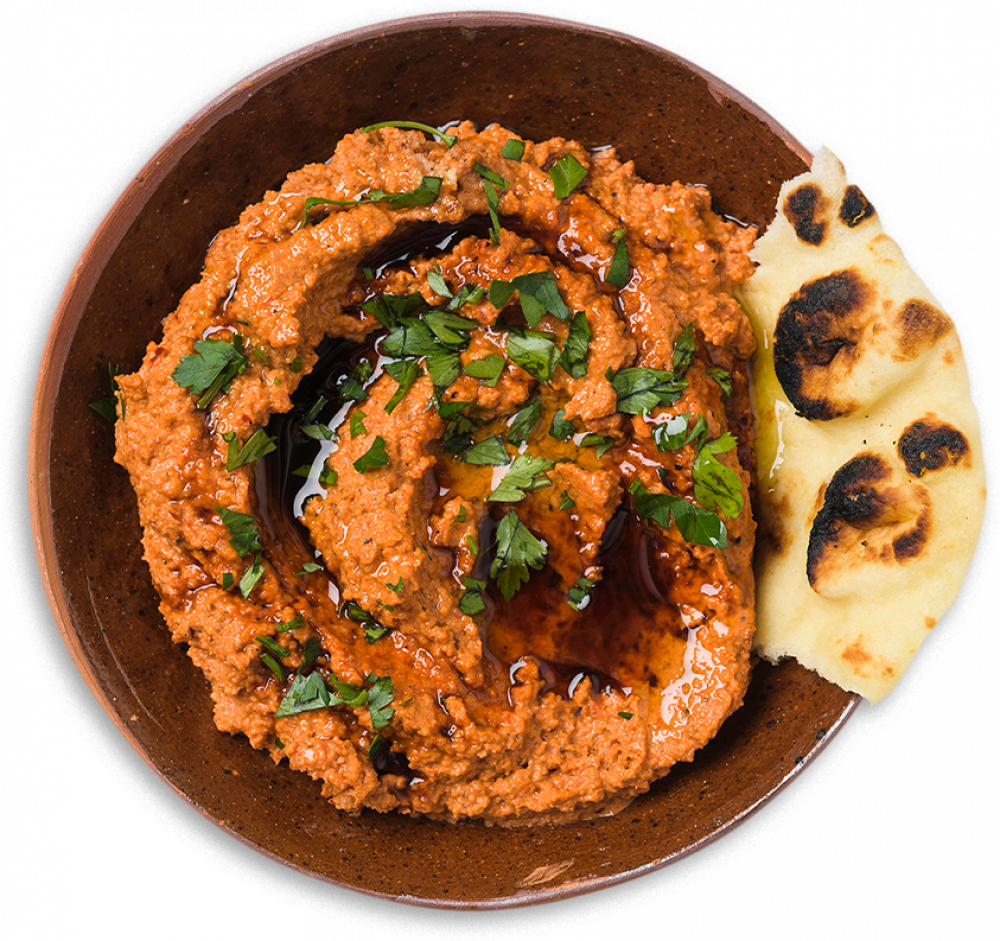
A Spicy-Tart Dip from the Middle East
At a hotel in Muscat, Oman—where meals typically begin with meze-style appetizers called muqabbilat—we were introduced to muhammara, a spicy-tart dip for flatbread made from walnuts and roasted red peppers. The name comes from the Arabic word for reddened, and the dish originated in Syria, where it often is served alongside hummus and baba ghanoush. We liked it with flatbread, but also found it was delicious as a vegetable dip or sandwich spread. To make, in a small skillet over medium, toast 3 tablespoons olive oil, ½ cup walnuts and ½ cup panko breadcrumbs until golden brown. Off heat, stir in 1 garlic clove (chopped), then cool. Transfer to a food processor and add a 12-ounce jar roasted red peppers (drained), 1 tablespoon lemon juice, ½ teaspoon kosher salt, ½ teaspoon ground cumin, ¼ teaspoon ground black pepper and ¼ teaspoon red pepper flakes. Process until smooth, then transfer to a serving dish and drizzle with olive oil, pomegranate molasses and chopped fresh parsley.
Smoked Paprika, Now Flaked
In the Extremadura region of western Spain, we discovered a fresh take on smoked paprika—a flaked variety. We already loved the deep, smoky richness ground smoked paprika adds to our cooking. But we found that the flakes—called escamas—add intense pops of sweet smoke we can’t get from ground varieties. And we like to use them as much at the table for a finishing flourish as we do at the stove during cooking. The smoked flakes have a deep, rich flavor yet remain fruity and light. Sprinkled on seared steak, scrambled eggs or avocado toast with a drizzle of lime juice, the flakes add a light smokiness without spice. Mix them with kosher salt, ground cumin and a pinch of cayenne for a great dry rub for chicken thighs or to toss with shrimp before grilling. Amazon sells 1.4-ounce cans of Pons Sweet Smoked Paprika Flakes for about $10.
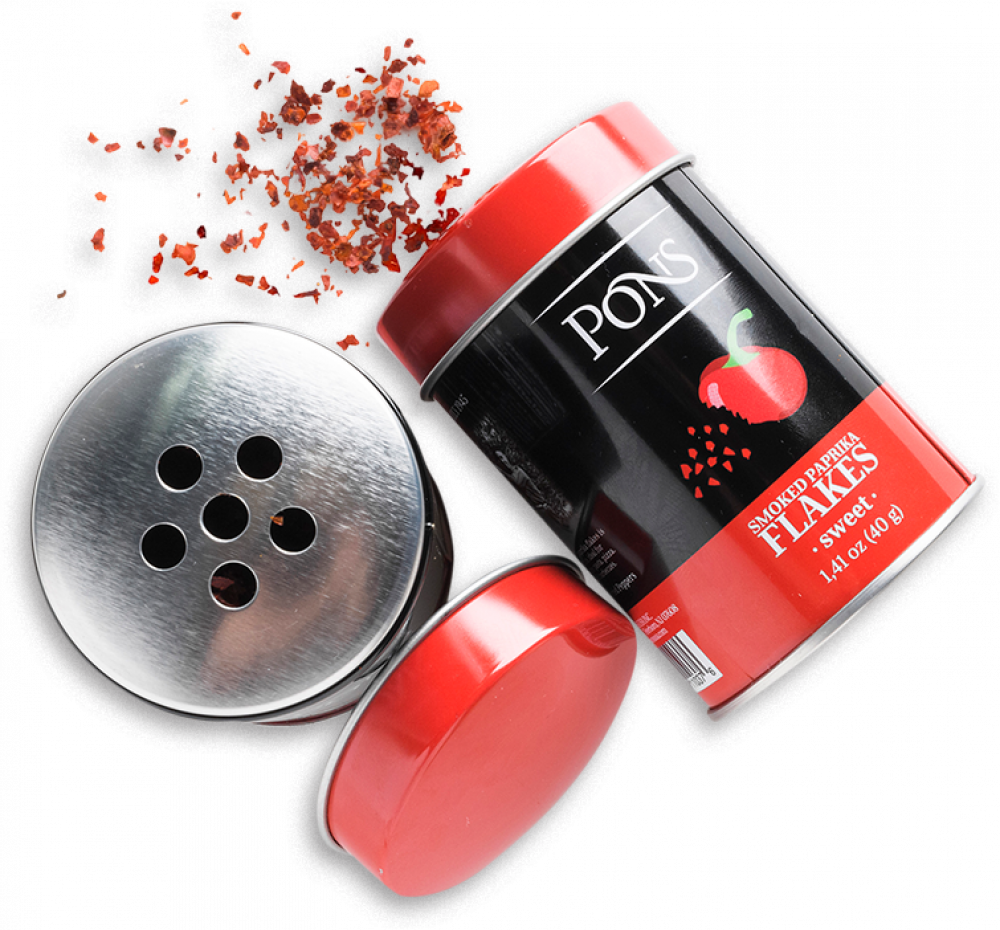
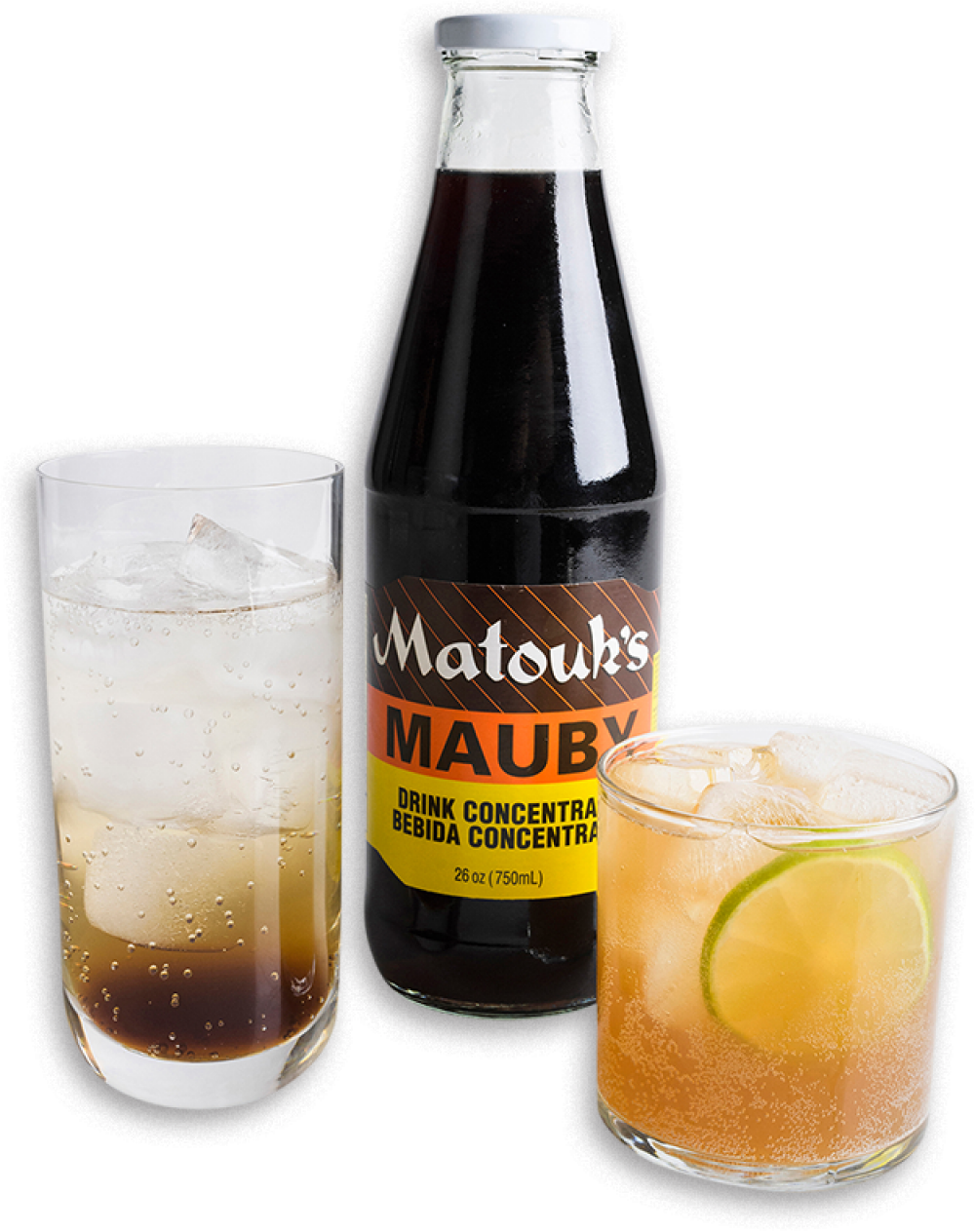
A Bold Beverage from Barbados
In Barbados, street hawkers sell refreshing drinks flavored with an extract made from the bark of the mauby tree. They have a distinctive licorice-anise aroma and a bracing sweet-meets-bitter flavor, much like an adult root beer minus the fizz. We found that mauby concentrates available online were refreshing mixed with sparkling water, but we also liked them as a glaze for pork tenderloin. Simmer ½ cup mauby concentrate with 1½ teaspoons Aleppo pepper and ½ teaspoon granulated garlic until thick and syrupy, then slather on the meat before, during and after roasting. Finish with a squeeze of lime juice after slicing. The concentrate also made a great addition to a Dark and Stormy cocktail. Stir together 4 ounces ginger beer, 1 ounce spiced rum, the juice of ½ lime and 1 tablespoon concentrate, then pour over ice. Amazon sells 26-ounce bottles of Matouk’s Mauby for about $14.
The Vietnamese Salt with Kick
In Ho Chi Minh City, street vendors selling fresh fruit cut to order almost always serve it with a generous sprinkle of muối ớt, or chili salt. Though brands vary—including many homemade versions sold at street markets—the coarse seasoning typically is a blend of dried shrimp, salt, garlic, chili flakes and sugar that is ground, then toasted until dry and crunchy. Rather than fishy, chili salt tastes deeply savory with pleasant pops of heat and tang. While it is delicious on pineapple and mango, we also love it sprinkled on rice, noodles and roasted vegetables. It also would be great combined with lime juice to dress a papaya or green mango salad. Dh Foods Tay Ninh Chili Salt Mixture is available on Amazon for $9 for a 4-ounce bottle.
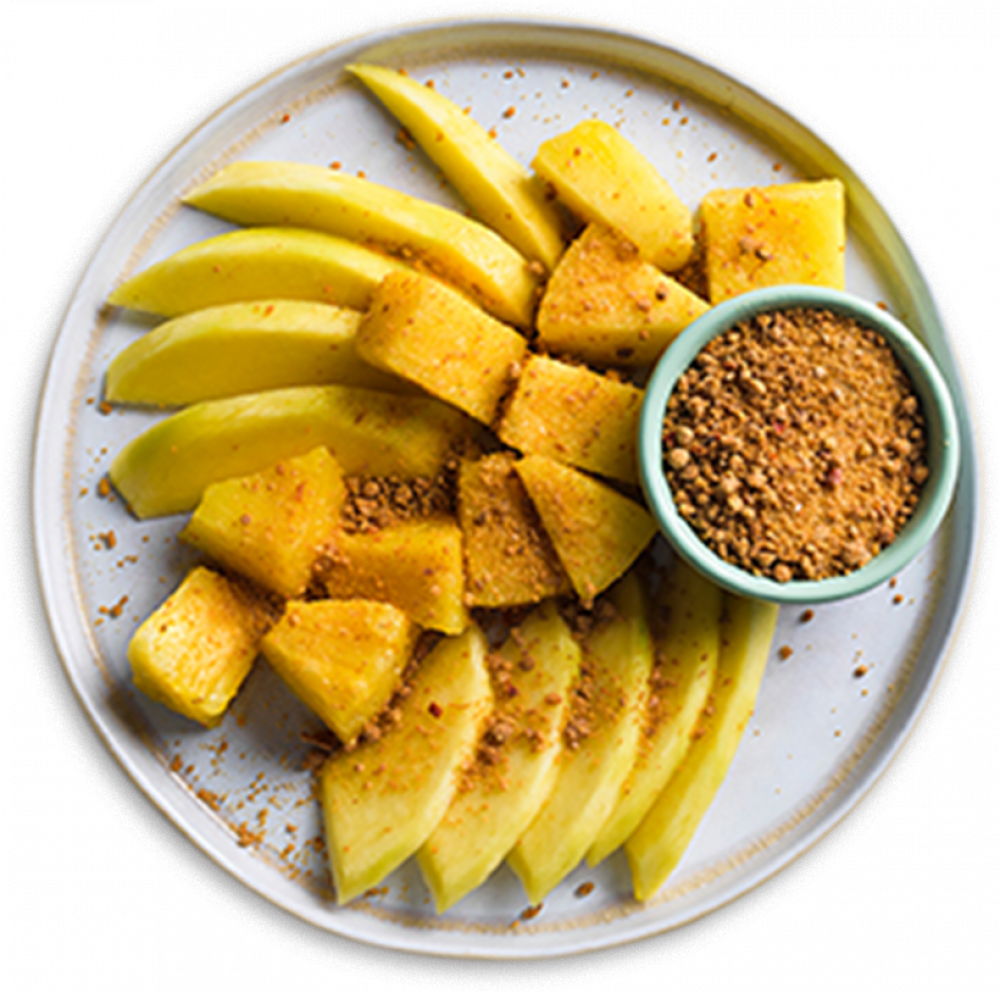
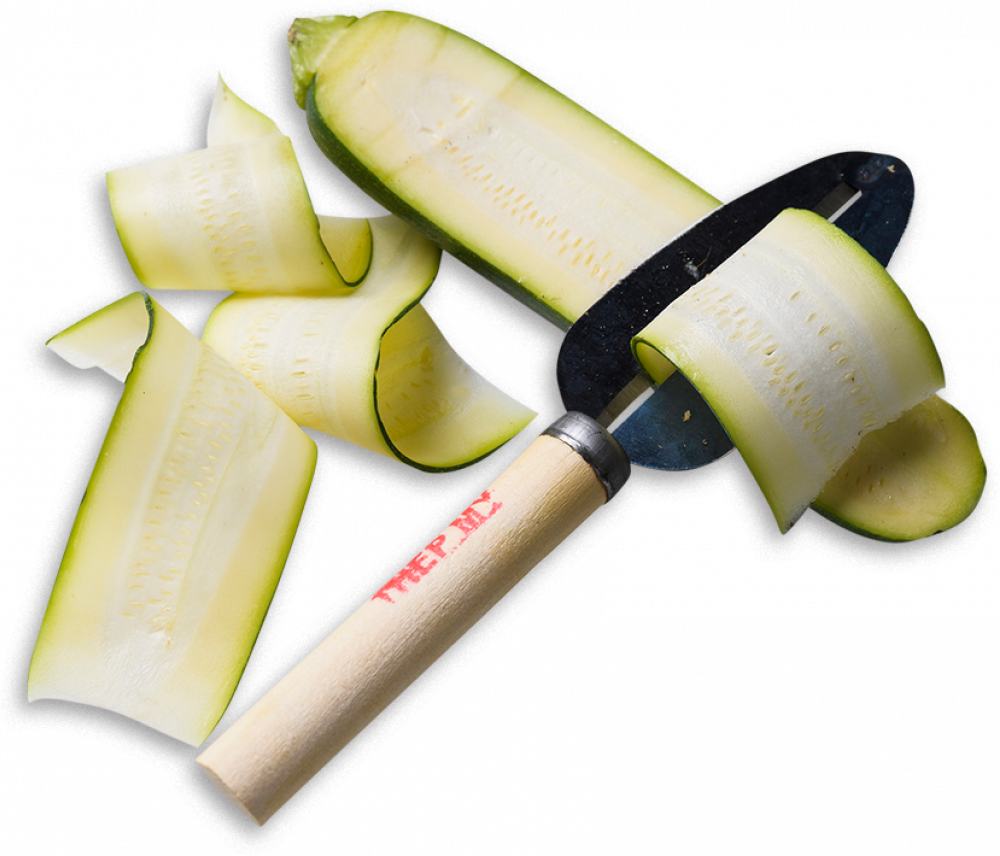
The Appeal of a Different Peeler
Vietnam’s vegetable peelers mean business. Called dao bào, the tool resembles a flat spade with a sharp-edged center slit—perfect for quickly stripping broad ribbons off produce. Larger versions can remove the outer layer from cane stalks used to create a sweet beverage. Less suited for fine shreds, these peelers excel at creating long, wide strips of carrot or raw zucchini or peeling tough root vegetables. We bought ours in the markets of Ho Chi Minh City for less than $1, but various sizes are available on Amazon starting around $14.
We love making fresh spring rolls, those bundles of thinly sliced vegetables, fresh herbs and seafood, meat or tofu found across Southeast Asia. But working with the translucent rice paper rounds used to wrap them can be tricky. Out of the package, the dry, brittle rice papers first need to be moistened before they can be wrapped around the fillings. We’d always submerged them one at a time in a bowl of room-temperature water—a method that can be rather unforgiving. Leave them in even a few seconds too long and the papers turn mushy and fall apart when wrapping; soak them too briefly and they crack. But when we visited Ho Chi Minh City, chef Peter Franklin—who prepares modern takes on classic Vietnamese food at his restaurant, Anan Saigon—taught us a better way. Franklin instead uses a spray bottle to moisten the wrappers. Lay a kitchen towel on the counter and set the rice paper wrapper on it. Mist it evenly with water from a spray bottle, wait a minute, then turn it over and mist again. After a few seconds, check to see if it is pliable. If not, mist again and repeat until ready to wrap. Franklin also likes to simplify the wrapping. Rather than tucking in the sides as he rolls—creating the classic burrito-style bundle—he rolls them as tight logs, leaving the ends open. He then slices them across the center to create two rolls, or cuts them into six pieces, similar to a maki sushi.



